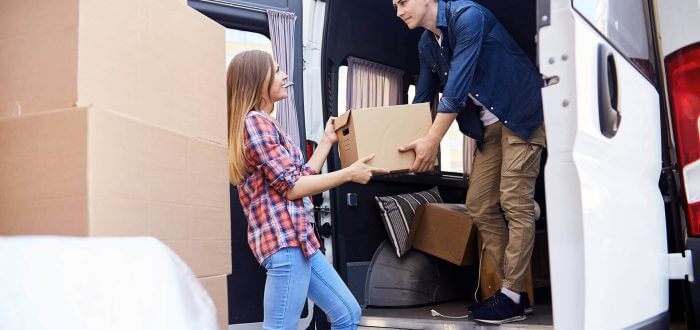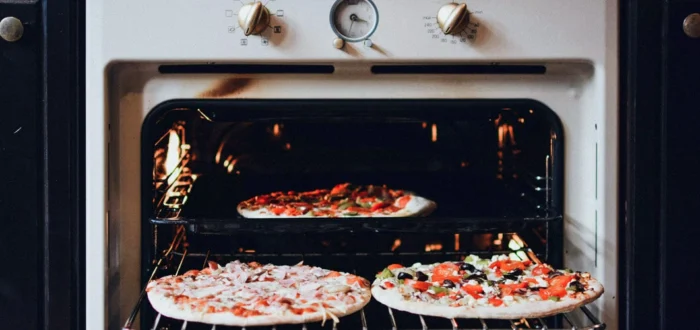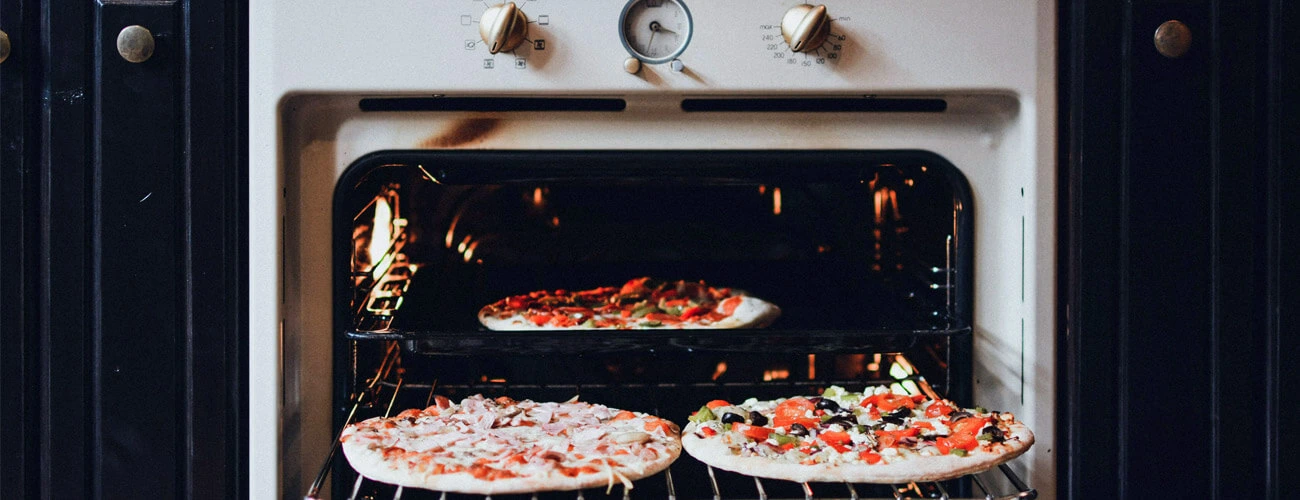

How to Move an Oven Across the Country Without Breaking It
Posted in How-to on July 19, 2025
Moving a stove might not sound like the most thrilling part of your relocation, but it’s a task you don’t want to overlook. But how to move an oven? That sturdy appliance that’s been cooking your meals for years is far more fragile than it looks. Don’t worry – a safe move is entirely possible with a little planning. Let’s dive into how to get your stove to your new home in one piece.
How to Move an Oven – A Short Overview
From cleaning and disconnecting the appliance to using the right packing materials, every step is essential to protect both the stove and your home. Proper wrapping with moving blankets, securing fragile components like the glass door, and safely loading the kitchen range into the truck all help minimize the risk of damage. However, hiring a relocation company is often the best choice for this task, as they have the expertise and equipment to handle heavy appliances and ensure a smooth, stress-free relocation.
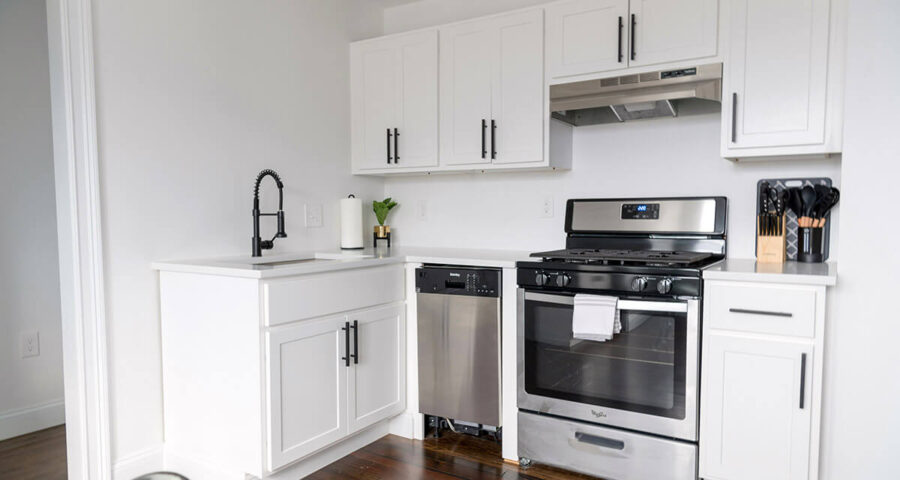
Preparing Your Stove for Moving Across the Country
Preparing your kitchen range for an interstate relocation is all about getting ahead of potential problems before they arise. That being said, before your belongings hit the road, it’s essential to clean this appliance thoroughly. Not only will this prevent leftover grease and food residue from causing unwanted odors or spills during transport, but it will also help you spot any issues that may need attention.
When relocating to a new home, you should also remove all detachable parts, such as racks, trays, and knobs, and clean them separately. Scrub the interior with a suitable oven cleaner, making sure it’s completely dry afterward. This way, you’ll not only be able to avoid unnecessary damage, but your kitchen range will be ready to use as soon as you unpack after the relocation.
Disconnecting and Securing Electrical Components
If your appliance is electric, just make sure you unplug it from the outlet safely. But how to move a gas oven? If your stove is gas-powered, you’ll need to shut off the gas supply carefully. It’s usually best to call a professional to help with gas disconnection. That way, everything will be handled safely and according to local regulations.
*About 38% of American households use gas ovens
After disconnecting the stove, the next step on your to-do list is securing any loose electrical components. Wrap the power cord and any detachable parts in protective packing material, like bubble wrap or towels, and label them for easy reassembly. For gas ovens, secure the gas line end to prevent dirt or damage during transit.
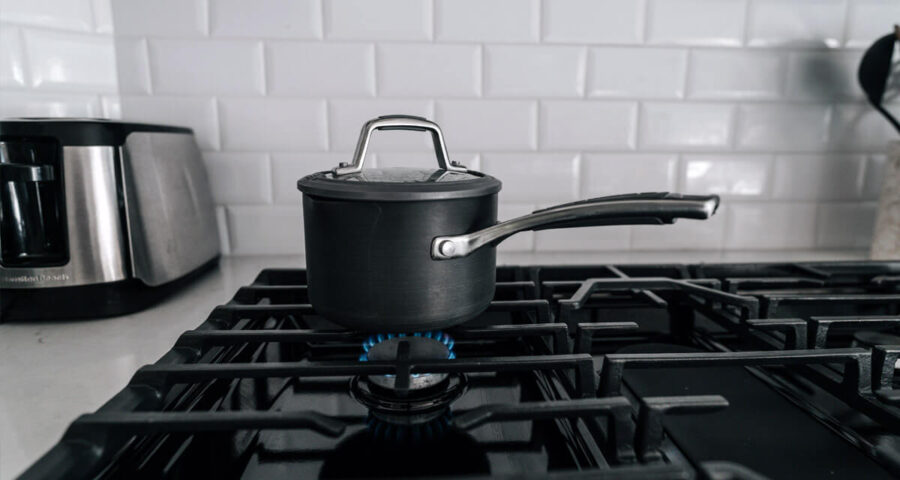
Choose the Right Packing Materials
When relocating to a new city, the packing materials you choose play a crucial role in keeping your appliance safe. Ovens are bulky and heavy and often contain delicate parts like glass doors and electronic controls. Using the right protective supplies ensures they arrive at your new home in perfect condition. Here’s a list of the must-have materials that provide the necessary cushioning and stability:
- Moving blankets – thick and durable, relocation blankets prevent scratches and dents.
- Bubble wrap – ideal for fragile parts like glass doors and control panels.
- Tape – secures the wrapping and keeps everything tightly in place.
- Corner protectors – foam or plastic pieces to safeguard the edges and corners of your appliance.
- Cardboard sheets – useful for reinforcing delicate areas, such as glass components.
- Boxes – for detachable parts.
Markers and labels – to clearly label any boxes and indicate fragile areas.
Is Weatherproofing Your Oven During Relocation Possible?
Weatherproofing your stove when long-distance moving is a smart precaution, especially if there’s a chance you’ll be relocating in the rain or during winter months. Ovens, like most large appliances, aren’t designed to be exposed to water, and taking extra steps to weatherproof them can protect against potential damage.
In addition to standard relocation blankets, you should wrap the appliance in a layer of waterproof material, such as plastic wrap or tarps. This creates a barrier against moisture that can seep in during rainy or snowy conditions. Make sure to cover the entire stove, including the bottom, and secure the wrapping tightly to avoid any gaps.
Additionally, note that ovens have various openings and vents that can let in moisture, especially during wet weather. Use plastic wrap or even painter’s tape to seal these openings temporarily to prevent rust or electrical damage.
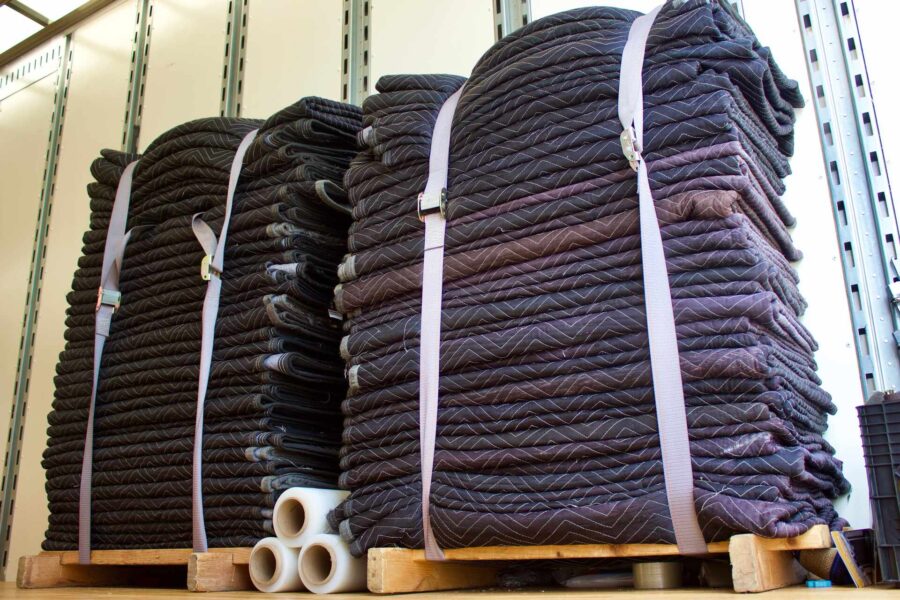
How Hard Is It to Move an Oven? Proper Packing Strategies
Relocating a stove might seem like a straightforward task, but the reality is that it can be quite challenging. Remember – transporting a stove requires careful planning as well as choosing proper packing strategies. Here are some of the most effective packing tips to make the process smoother and damage-free:
Tape the Door Shut
Use strong packing tape or straps to tape the stove door shut. This prevents the door from swinging open, which could damage the hinges or the glass. Be sure to use enough tape to keep it securely closed.
Wrap the Oven With Moving Blankets
To protect the oven’s exterior from scratches and dents, cover it entirely with heavy-duty relocation blankets. Ensure the blankets are large enough to cover every side. After wrapping, use heavy-duty packing tape (or stretch wrap) to secure the blankets in place. This prevents the blankets from slipping during loading and unloading, ensuring the appliance remains cushioned throughout the journey.
Add Bubble Wrap and Corner Protectors
For extra protection, apply a layer of bubble wrap to fragile areas like the door (particularly if it has a glass front) and control panels. This additional layer will act as a cushion to absorb any potential shocks during the transition. Attach foam or plastic corner protectors to safeguard the edges and corners of a stove, which are particularly prone to damage.
Pack and Label Smaller Components
When it comes to smaller components, such as stove racks, knobs, and trays, use bubble wrap or packing paper to wrap each of them separately. This prevents scratching and ensures that smaller parts don’t get lost or damaged. Place the wrapped components into a sturdy, well-padded box. If the box has space left, fill it with crumpled paper for extra cushioning. Once packed, clearly label the box with “Oven Parts” and note any fragile items inside. Relocation labels ensure these parts are easy to find when it’s time to reassemble the appliance.
Loading the Stove Into the Moving Truck
Once your kitchen range is packed and secured, the next step is loading it safely into the relocation truck. This process requires careful handling to avoid injury and ensure that your appliance makes it to its destination without any damage.
Keep in mind that ovens are notoriously heavy and awkward to move, so it’s best not to lift the stove with just manpower alone. Use equipment like appliance dollies and lifting straps to make the process safer and smoother. At the same time, never attempt to lift an oven by yourself. If you’re not hiring long-distance movers, enlist at least one other person to help. Make sure you both lift with your legs, not your back, to avoid injury. Keep your back straight, bend at the knees, and lift in a slow, controlled motion.
If you’re using a dolly, ensure the kitchen range is securely strapped in before lifting. This prevents it from slipping or tipping over while in transit. Stay in constant communication with your team, especially if you’re navigating stairs, corners, or uneven surfaces.
Positioning the Stove in the Truck to Prevent Damage
Ideally, this appliance should be placed against the back or side walls of the truck to keep it stable. Avoid leaving it in the middle of the truck, where it might shift during the drive. Once it is in position, secure it tightly with relocation straps or bungee cords. Make sure the straps are tight enough to prevent the kitchen range from shifting but not so tight that they damage the appliance.
In the end, always transport it in an upright position to avoid damaging its internal components. Laying it on its side or back can lead to electrical or mechanical issues that may require costly repairs.
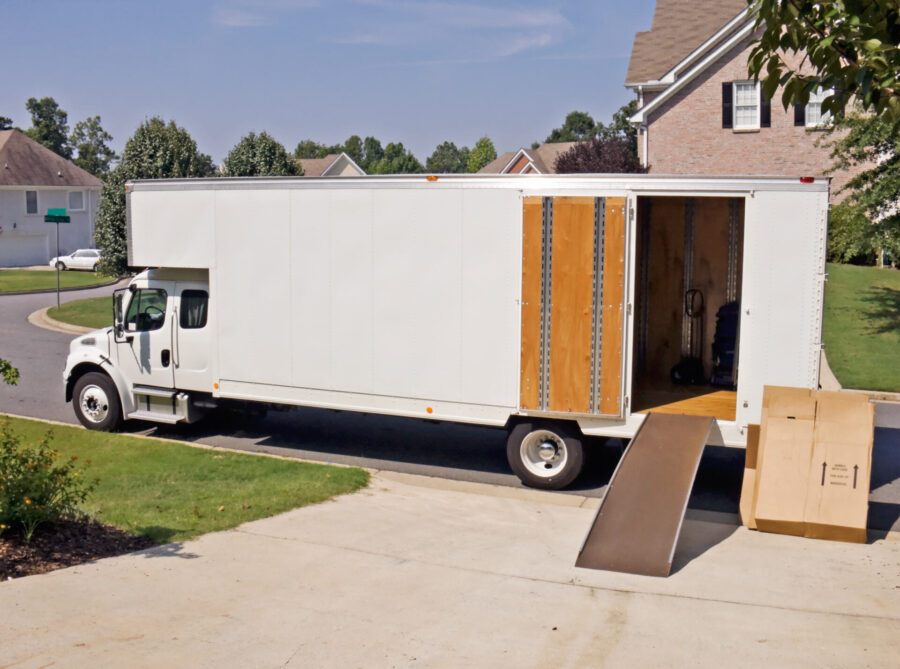
Transporting the Oven Safely – The Final Check
The final check will help you avoid potential relocation mistakes and guarantee the safety of your kitchen range during transit. Therefore, before you go, take one last look at the padding around the stove. Check that blankets are still securely fastened and cover all surfaces. Reposition any protective materials to ensure that both the kitchen range and surrounding items are cushioned from possible bumps, vibrations, and impacts.
The stove should be tightly packed with little to no movement. If you notice any shifting, add more padding or tighten the straps further. Testing the load’s stability before setting off can save you from discovering problems mid-move. Additionally, when moving cross-country, it’s a good idea to plan for mid-journey checks. This quick check can prevent any unforeseen issues from worsening.
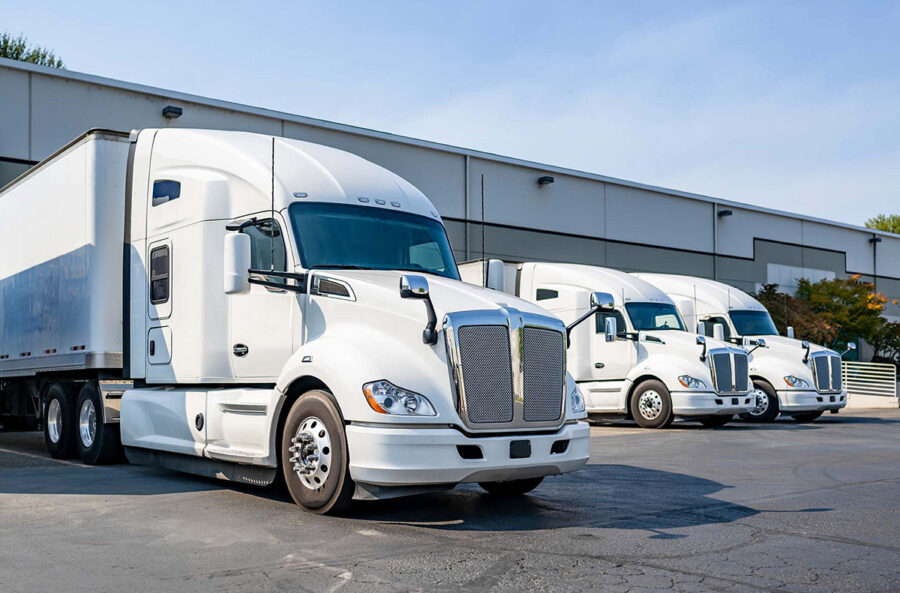
Unpacking and Reassembling the Oven
Before reconnecting, carefully inspect the stove for any visible damage. Check the exterior for dents or scratches, and examine glass components for cracks or chips. Test the door and hinges to ensure they open and close smoothly. Additionally, inspect internal parts, like racks or trays, for damage and verify they fit properly.
Reconnecting a stove will depend on the type of appliance you have. If you’re relocating a gas oven, schedule a technician to start up the gas supply. For electric ovens, simply plug them into a grounded outlet. Test the oven for any unusual sounds or smells, and ensure it powers up properly.
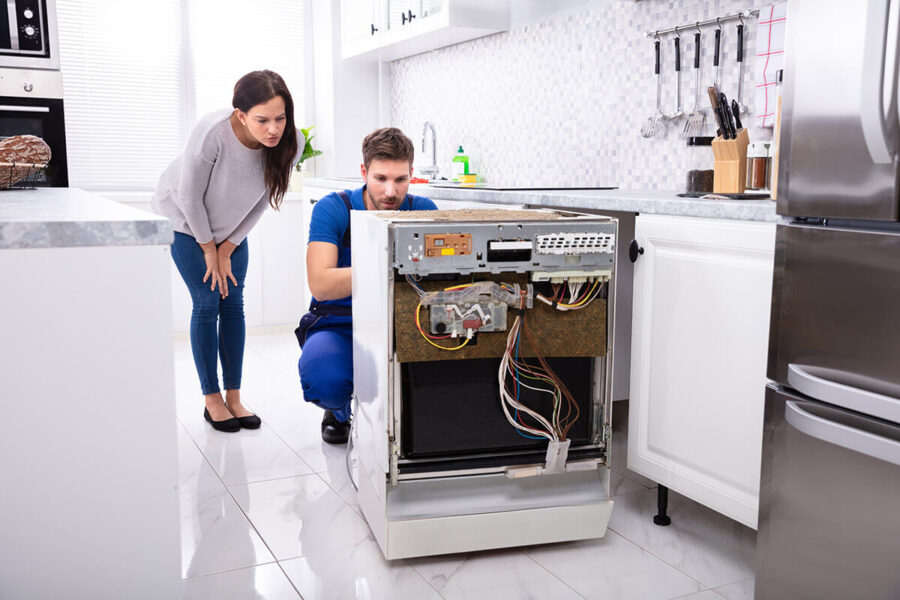
Should You Hire Professional Movers for Heavy Appliances?
While it might be tempting to tackle the task yourself, hiring a reliable relocation company, such as Cross Country Movers, is often the safer and more efficient choice. Their expertise and access to specialized tools make the process much smoother. With their help, both your appliances and your home will stay safe and intact.
Professional movers have the experience needed to relocate large items. They are trained in the best techniques for lifting and transporting appliances without causing damage. Without their packing services to protect your relocation inventory, there’s a higher risk of accidents or damage during transit.
Instead of figuring out how to lift, load, and transport a heavy appliance when relocating to a new state, you can rely on professionals to handle the logistics. It’s simple – cross-country moving services allow you to focus on other aspects of your relocation, knowing that your appliances are in good hands.
Experience a Stress-Free Relocation With Our Skilled Team
Moving heavy appliances like ovens requires more than just strength – it demands experience, proper equipment, and careful handling. With Cross Country Movers by your side, you can avoid the risks of damage or injury that come with attempting to relocate the stove yourself.
Our professionals have the expertise to handle every aspect, from safely packing your stove to securing it during transit, ensuring it arrives at your new home in perfect condition. Don’t risk the safety of your appliances – let our experts handle the heavy lifting with precision and care. Contact us today for a free quote.
